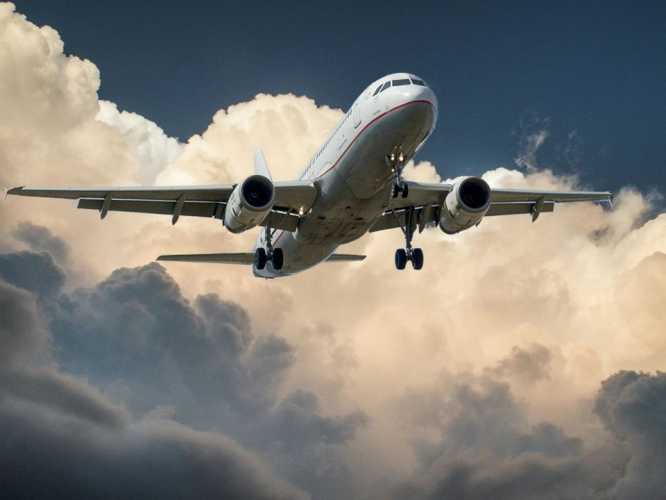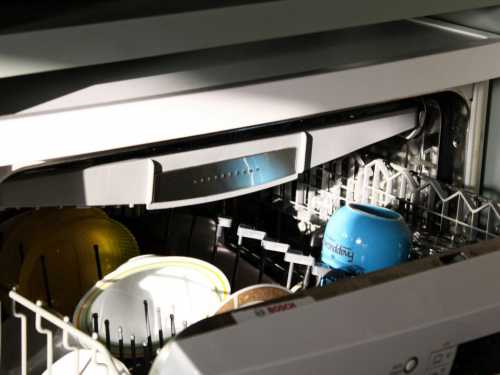A mathematical miracle, or the story of Air Canada Flight 143

The story of Air Canada Flight 143 has entered aviation textbooks not only as an example of courageous and professional behavior of pilots in an emergency, but also as an instructive lesson about the importance of correct mathematical calculations and units of measurement in aviation. This Boeing 767, which later received the nickname “Gimli Glider”, managed to land safely despite a sudden loss of fuel at an altitude of more than 12 thousand meters. As a result, the emergency ended with almost no consequences for passengers and crew. However, that dramatic episode that occurred on July 23, 1983, became a real reason to review a number of procedures in aviation, and most importantly – a vivid example of how important accurate mathematics and careful handling of units of measurement are, informs Ukr.Media.
Background and starting point
Air Canada Flight 143 was scheduled to fly from Montreal to Ottawa to Edmonton. There were 61 passengers and a crew of 8 (including flight crew and flight attendants). The Boeing 767-200 was a relatively new type for Air Canada, and at the time was one of the first airliners to feature a “glass cockpit” with digital instruments. However, the upgrade, which was intended as a step forward, led to unexpected difficulties.
That day, the airliner did not have a system that was responsible for indicating the fuel level. Therefore, pilots and ground personnel had to rely on manual calculations and methods for determining the amount of fuel. Boeing 767 aircraft were already designed for the metric system, and Canada was gradually switching to SI units. However, many companies and many employees were still used to working the old way: using pounds to calculate the mass of fuel. The result was confusion and a fatal miscalculation: the fuel for the flight was loaded based on an incorrect conversion between pounds and kilograms.
Calculation Confusion: Pounds vs. Kilograms
The main problem arose when filling the aircraft's fuel tanks. Fuel is measured in mass (kilograms or pounds), but it is usually pumped into the tanks in liters. The metric system, which was being implemented in Canada, assumed that 1 liter of aviation fuel weighed about 0.8 kg, but if someone calculated in pounds, converting the number of liters incorrectly, it was easy to make a big mistake. That is what happened in the case of Flight 143.
1 pound is approximately 0.4536 kilograms, i.e. 1 kilogram of fuel ≈ 2.2046 pounds. When actually loading on board, the specialists did not take into account the necessary conversion factor. The situation was aggravated by the fact that the calculations were made manually, and as a result, approximately half as much fuel as was needed for a safe flight from Montreal via Ottawa to Edmonton ended up in the aircraft tanks.
The aircraft's commander, Robert (Bob) Pearson, and co-pilot Maurice Quintal, of course, assumed that the tank was filled correctly. The onboard automatic fuel control system was not working, and ground services confirmed the “necessary” amount. No one suspected that the basis for the calculation had been taken incorrectly. It can be said that Flight 143 was a victim of a protracted transition period in Canada, when the use of pounds had not yet become a thing of the past and the metric system had not yet fully taken root.
Critical moment in the air
When the Boeing 767 took off from Ottawa, nothing foreshadowed a dramatic outcome. At an altitude of approximately 41,000 feet (about 12.5 km), the crew noticed alarm signals. First, there was a decrease in pressure in one of the fuel pumps. The pilots attributed this to a malfunction of the pump or sensor, since, according to their assumptions, there was enough fuel in the tank. Then the second pump began to give error signals. Alternating signals of fuel system failure began.
The low fuel warning lights on board flashed, and it became clear that there was indeed not enough fuel. But the pilots and flight engineers (who were not formally on the Boeing 767, since this model does not provide for a separate engineer in the crew, but ground specialists nevertheless consulted with the crew) could not believe that there was so little fuel that the engine was starting to “starve”. When the first engine stopped, there was no doubt. Almost immediately after that, the second one failed. A plane without running engines in the sky is the worst nightmare of a pilot and passengers. The loss of both engines meant not only the loss of thrust, but also the loss of key systems, including electrical power and hydraulics.
Transforming into a glider: skill and mathematics
The Boeing 767 is a heavy airliner, but it can also plan, albeit for a short time. Fortunately, the design includes a so-called Ram Air Turbine (RAT), which in the event of a total loss of power automatically opens, extending outward into the air flow. This small turbine is rotated by the oncoming flow and provides a minimum of electricity and hydraulic pressure to operate the controls. Thanks to the RAT, the pilots were able to maintain control of the airliner and, despite the general shock of the situation, acted professionally and coherently.
The ship's commander, Robert Pearson, was not only an experienced pilot, but also, by a lucky chance, was fond of gliding, that is, he had experience in controlling an aircraft in a planing mode. His glide path – that is, a descent without an engine – required precise calculations, and in conditions where every kilometer of altitude literally had a huge importance. The wrong choice of descent speed or incorrect distance planning could lead to the aircraft either “dropping” its nose in front or flying over the airport and ending up in a field with no chance of a safe landing.
Co-pilot Maurice Quintal, realizing the real danger, quickly checked the coordinates of the nearest airfields in order to make an emergency landing. The most logical option was initially Winnipeg Airport, but assessments showed that the plane might not make it due to the loss of altitude. Then they remembered the former Gimli Air Base in Manitoba (Gimli Industrial Park Airport), which was about 20-25 kilometers away. During the operational discussion, Quintal, who was originally from those parts and had a general idea of the location of the airfields, suggested trying to land there.
The main problem was that Gimli Airport had no permanent civil aviation services – it was a former Canadian Air Force base that had long been closed and partially converted for car and go-kart racing. On that summer day, the competition was taking place there, and no one expected the appearance of a passenger Boeing 767 making an emergency landing.
Landing on the “autodrome”: a luck factor and a calculated decision
Without the engines running, landing becomes a one in a million chance: the crew has little room to maneuver and there can be no repeated approach. However, Pearson's precise calculations and many years of gliding experience allowed him to choose the optimal rate of descent and angle of attack to maintain lift. It was important not to lose control of the speed and maintain control until the moment of touching down on the strip.
When the plane descended low enough, the pilots discovered another problem: the strip in Gimli was not only unprepared, but also divided by a barrier, and part of the area was occupied by cars, trailers and race spectators. People were at the end of the improvised “runway” and, seeing the huge plane at low altitude, suddenly began to run away from the unexpected danger.
Fortunately, the skill of the crew allowed to avoid a disaster: the plane managed to land quite softly on the front and main landing gear. However, at the moment of landing, the front landing gear was not fully fixed due to the lack of full hydraulics. As a result, in the first seconds after the touchdown, it was partially damaged and sparks were emitted. But, fortunately, the liner was able to stop outside the runway, and there were no casualties or serious injuries. Several people on the ground received minor injuries, but none of the passengers died or were seriously injured. The structure of the Boeing 767 itself also turned out to be surprisingly strong, which allowed the ship to survive after such a hard landing.
“Gimli Glider”: Investigation and Conclusions
After the emergency landing, the plane was named the “Gimli Glider.” The story of Flight 143 was covered by all the world's media and became a sensation, since such a miracle of landing a heavy airliner without engines had not been seen in civil aviation for many years.
Canadian authorities and Air Canada conducted a thorough investigation, which found that human error and incorrect mathematical calculations caused by confusion in the units of measurement used were the main causes. The investigation also indicated the need to upgrade fuel alarm systems, improve staff training, and change protocols to prevent similar confusion in the future.
The commission emphasized the high professionalism of the pilots and crew members – their clear and quick actions allowed to avoid a disaster. And, of course, one of the decisive factors was Captain Pearson's passion for gliding. In conditions when the liner was practically left without thrust, the glider pilot's experience helped to choose the correct rate of descent and angle of approach for landing.
The importance of accurate calculations in aviation
The case of the “Gimli Glider” clearly shows that there are no trifles in aviation. Incorrect use of the conversion factor between pounds and kilograms is not just a mathematical abstraction. Such a “small” error in the calculations turned into a near disaster. Any inaccuracy in flight data can lead to catastrophic consequences, especially in such areas as fuel planning, navigation, and calculation of take-off and landing masses.
If it weren't for the luck and high professionalism of the pilots, the flight could have ended in tragedy. Therefore, the incident prompted not only technical improvements, but also significant changes in training programs, control procedures, and checks on the correctness of calculations.
It is worth understanding that the automation systems on the Boeing 767 were quite reliable in themselves. However, it was the failure of the fuel level indicator (or the lack of accurate data available due to a malfunction of the indicator) that opened a loophole for human error. Under normal operation of all sensors, such confusion would have been clarified on the ground before takeoff, because the computer would have signaled that there was not enough fuel.
The future of the aircraft and lessons for the future
Surprisingly, the plane was repaired and put back into service shortly after the crash. The Boeing 767 with the tail number C-GAUN flew for many more years and became widely known as the “Gimli Glider”. Only in 2008, after a solid service life, was the plane finally written off and sent to storage, and then disposed of. However, its story lives on in the form of numerous documentaries, articles, and the episode itself entered aviation textbooks as an example of a training case.
In memory of the incident, the crew and passengers have repeatedly met at various commemorative events related to this “mathematical miracle”. There are several documentaries and programs, including episodes in popular series about the investigation of air crashes. These materials analyze the situation in detail: from the wrong fueling and confusion in units of measurement to the last critical maneuver and “braking in sparks” on the runway.
For airlines and aviation authorities around the world, the incident with Flight 143 was a reason to review procedures. Particular emphasis was placed on the need to clearly separate or completely convert all calculations to the metric system (or, conversely, work only in one system to eliminate any ambiguities). In modern realities, when automatic control systems and digital calculations have become even more reliable and ubiquitous, the likelihood of such an error has noticeably decreased. However, the human factor has not disappeared. Therefore, the importance of strict regulations, repeated checks, verification of units of measurement and conversion factors is still enormous.
The human genius factor
Although the incident was caused by human error, it was human genius (and practical skills) that ultimately saved dozens of lives. The Himli glider can be safely called not only a miracle, but also a remarkable demonstration of how humans are capable of incredible ingenuity in extreme conditions.
One of the key skills of an experienced pilot is the ability to quickly switch between automatic routine and manual, intuitive-mathematical control when the equipment fails. The pilot, possessing the knowledge and skills of a glider pilot, is always aware of the current angle of attack, where the optimal rate of descent is and how far the aircraft can be extended without engines. This case is direct evidence of why flights in simulating engine failure and practicing extreme situations are so important in training programs.
In addition, the story of Flight 143 is a great example of the importance of teamwork. The pilot and co-pilot had to act together and support each other: while one was engaged in direct management and control of the glide path, the other conducted calculations, searched for the nearest airfields, monitored the status of the instruments and contacted the ATC service (air traffic control). At such moments, every person in the cockpit is critical, and without clear coordination and mutual assistance, a successful outcome is practically impossible.
Air Canada Flight 143, nicknamed the “Gimli Glider,” was a turning point in aviation history. This unique situation showed how a single mathematical error in converting pounds to kilograms could endanger the lives of dozens of people, as well as lead to an incredibly risky landing of a multi-ton airliner without engines. Fortunately, the crew's experience, quick reactions, and planning skills saved the day – and this rescue can be called a true mathematical miracle in many ways.
Today, these lessons have not been forgotten: in modern aviation, units of measurement and mass calculations are given the utmost attention. The incident partly accelerated the process of Canada's full transition to the metric system in aviation and strengthened double-checking protocols. Nevertheless, the “human factor” remains important: as a source of error and a source of salvation. The case of the “Gimli Glider” to this day reminds us that in aviation it is necessary to combine technological reliability, mathematical precision and the human ability to find a way out of seemingly hopeless situations.
Джерело: Source



